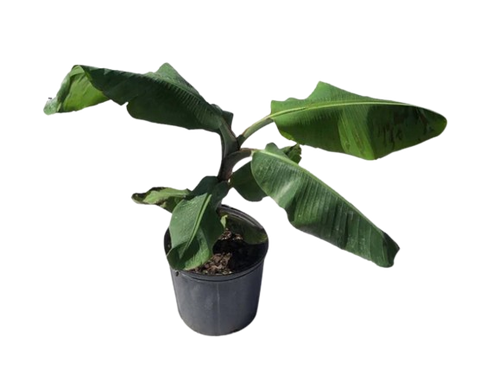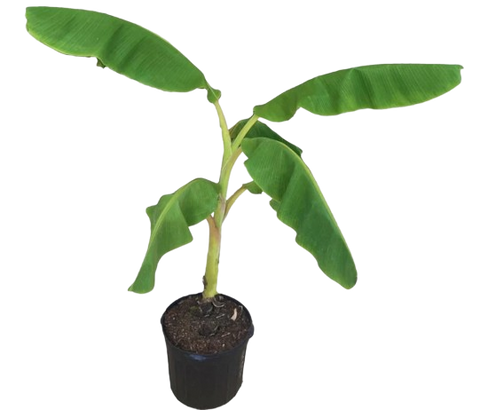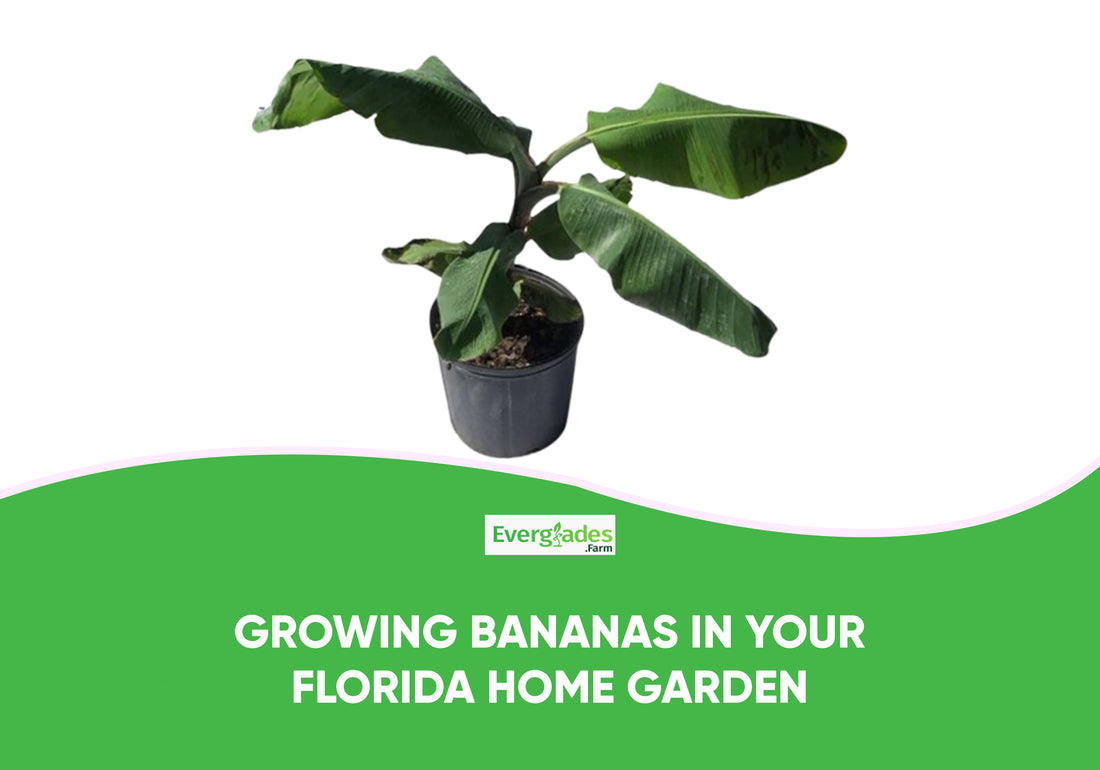Florida’s hot humid climate makes growing delicious, tropical bananas possible right at home. Many people wonder "Can bananas grow in Florida?" While they are not native to Florida, banana trees thrive with abundant heat and moisture.
How to grow bananas in Florida? Bananas require tropical temperatures year-round, making Florida an ideal environment. Warmth-loving banana trees flourish in moist, nutrient-rich soil and ample sunshine. Give them space for air circulation, consistent moisture, and protection from wind. A long growing season and generous rainfall help homegrown bananas reach their full potential.
When cared for properly, banana trees reward you with their lush, broad leaves and sweet fruit. A fast-growing banana plant in Florida makes a vibrant statement in the landscape.
Follow this guide covering ideal conditions, care tips, and how to grow bananas in Florida.
How to grow bananas in Florida: Complete Guide

Few homegrown fruits rival the taste of a sun-warmed banana harvested at peak flavor. Here are some tips to help you in growing bananas in Florida:
Selecting the Best Site for Planting Bananas
Banana trees in Florida need the right growing conditions to grow. Provide them with the following:
Full Sunlight
Bananas require intensive light to fuel rapid growth and ample fruiting. For planting a banana tree in Florida, choose a location receiving at least 6 hours of direct hot sun daily. Dense shade or only dappled sun leads to slow development and reduced yields.
Shelter banana trees from strong wind, however, which shreds broad banana leaves. A south-facing site with a backdrop of trees or shrubs meets both sun exposure and protection needs. Position them in neat rows for good air movement to discourage fungal disease.
Well-draining, Nutrient-Rich Soil
One of the important steps in growing banana trees in Florida is to provide a generous amount of compost or composted manure into your planting site to create light yet moisture-retentive soil. Blend in decomposed leaves each season to replenish nutrition. Proper drainage is also crucial - standing water suffocates roots while dry soil stunts plants.
Test pH levels to ensure slightly acidic conditions at 5.5 to 7.0. Bananas struggle below 5.0 but Florida naturally trends acidic. Simply blending compost corrects higher readings towards neutral levels healthy for bananas.
Adequate Spacing for Airflow
One of the most important things you need to know about how to grow bananas in Florida is that you need to allow 8 to 10 feet of space all around each banana you add, maybe more for robust varieties. Their arching leaves soon occupy this area to deliver abundant fruit. Without room to breathe, however, pests and diseases quickly spread.
Plant new trees in rows or wide groupings rather than crammed together. You can always fill gaps with underplantings of shade-tolerant herbs or flowers later on. Proper spacing now prevents problems in the future.
Caring for Banana Trees Through the Seasons

Now let's dive deep into how to grow bananas at home! Giving your banana trees attentive care reaps significant rewards in growth, yield, and fruit quality:
Water Deeply and Consistently
Banana trees in Florida need irrigation only when rainfall falters for more than a week at a time. Monitor soil moisture below the surface when uncertain. Spread protective organic mulch over the root zone to help retain moisture and reduce watering duties.
You need to water thoroughly to encourage deep roots. Slow-absorbing clay soils may require irrigation pipes on a timer system. Let the soil dry slightly between waterings for healthy oxygen levels.
Feed with Seaweed or Manure Teas
Most people who are learning how to grow bananas in Florida often miss this step! You need to provide a complete organic fertilizer, alternating with compost tea or soluble seaweed extract. The latter options supply vital micronutrients and enzymes for robust growth and disease resistance.
Apply extra potassium mid-summer to fill out fruits. Dig in more compost or manure before the main growing period for season-long nitrogen.
Guard Against Common Pests
For optimal banana tree care in Florida, preventative care is important to keep pests at bay:
Watch carefully for tiny spider mites that colonize the undersides of leaves in dry weather. Also, scout for nematodes around roots and banana borers tunneling inside trunks. Catch infestations early by routinely inspecting plants closely.
Pruning off and removing infected leaves or fronds prevents spread. For active infestations, try gentle organic pesticide sprays. Maintain clean garden conditions with prompt debris removal too.
Harvesting Perfect Bananas
Enjoy the fruits of your labor when those beloved bunches of chubby bananas finally appear about 9 months after planting young trees:
Identifying Ripeness Cues
It takes 75 to 180 days post-flowering for initial bananas to reach maturity depending on the variety. Check filling clusters weekly as the fingers plump and point skyward when nearly ripe.
Light green skins fading to mottled yellow signal peak sweetness before intense spots appear. Avoid fruit flies coating clusters by enclosing unripe bananas in plastic sleeves until ready for cutting.
Recognizing Pick-Ready Bunches
Use sight, touch, and aroma when gauging ripeness. Wait until the cluster possesses:
- Rounded, filled-out fingers
- Light green skin blushing yellow
- A sweet fruity smell at the base
If dark speckles emerge on most fingers, harvest that day to maximize sweetness. Carefully cut banana clusters with a sharp knife without harming the trunk.
How to grow bananas in Florida: FAQs
Can bananas grow in Florida?
Yes indeed, Florida’s sub-tropical conditions perfectly match the banana tree’s needs - consistent heat, moisture, and good soil. So plant bananas in your garden today!
How long until bananas ripen after flowering?
Depending on the variety, allow 75 to 180 days from the appearance of the purple “bell” flower until the fruits fill out fully. Check weekly as the banana cluster matures.
Should I water banana trees every day?
No, too much water encourages root rot. Instead, allow the soil to partially dry out in between deep weekly soakings. Mulch retains moisture so less watering is needed.
What is the best fertilizer for banana trees?
Use 1 cup per month of a complete organic fertilizer, alternating with weekly compost tea or seaweed feedings. This fuels strong plants, great yields, and robust fruit.
Conclusion
Searching for productive banana trees ready to plant in your home orchard? Our family-owned nursery offers vigorous banana suckers and starter plants nurtured under ideal growing conditions for robust health.
Our banana trees stay pampered in roomy containers with enriched organic soil. We ensure every plant receives consistent moisture, expert pruning, nutrition boosts, and close monitoring to guarantee disease-free stock. That's why our bananas grow so fast with excellent yields shortly after planting.
Looking for something else? Many warm climate gardeners dream of successfully growing a peach tree in their own backyard for fresh summer fruit! In addition to our popular banana trees, we sell other fruiting trees and vines suited to Florida's climate. Call or visit us today to order premium trees.
Disclaimer- The information provided in this content is just for educational purposes and is written by a professional writer. Consult us to learn more about planting banana trees.

